The story behind the Scout emblem: fleur-de-lis or arrowhead?
The Scout symbol is one of the best known global ‘brands’. It’s often known as the arrowhead or fleur-de-lis, but the origins of one of the worlds best known icons can be confusing.
The symbol’s name changes depending on the country, with some preferring the name arrowhead to fleur-de-lis, with its traditional royal connections. Others call it the fleur-de-lis, due to the arrowheads military connections.
As Scouts spread around the world, so did the story of the iconic badges development. Whatever it’s called, it brings Scouts together in a sense of unity and friendship.
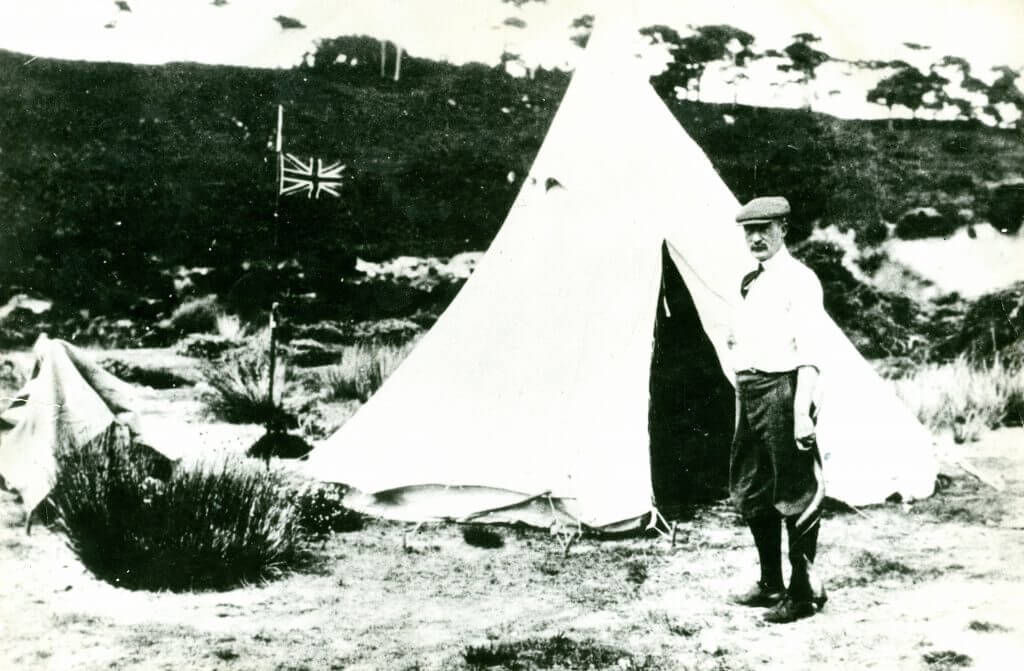
The Scout badge origins
At the pilot Scout Camp, held on Brownsea Island in August 1907, Robert Baden-Powell gave the boys a Scout symbol to wear on their coats or hats. This was based a badge he had introduced for Army scouts when he was serving in India.
In the first edition of ‘Scouting for Boys’, published in 1908, Robert Baden-Powell referred to the Scout’s Badge as an arrow head.
He said: ‘The Scout’s badge is the arrow head, which shows the north on a map or on the compass. It’s the badge of the scout in the Army because he shows the way: so to a peace Scout shows the way in doing his duty and helping others.’
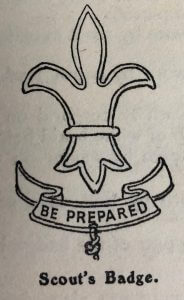
Following criticisms that the symbol was too militaristic, Baden-Powell renamed the symbol after the heraldic fleur-de-lis, a stylised lily symbolic of peace and purity.
Baden-Powell further explained:
‘The Scout’s badge was originally adapted from the North point of the compass, signifying that a Scout was able to point the way as truly as the needle of a compass.’
In the early days of Scouts, this badge was looked upon with suspicion by anti-militarist societies. One of these tarred us with being a war-like association, because our badge was a spearhead – or arrowhead – meaning aggression and bloodshed.
In reply to the cable on the subject I wrote – “The crest of the Scouts is fleur-de-lis, or lily, the emblem of purity and peace."
The fleur-de-lis was originally the crest of the French kings. Charles, King of Naples, owing to his French descent also had it as his crest.
During his reign Flavio Gioja, the navigator, who brought about the adoption of the mariners compass, assed a card marked with the initial letters N, S, E and W.
The North, in Italian, is tramontane, so the capital T stood for North. But, in dedicating his compass to the King, he made the T in the form of a fleur-de-lis in honour of the King’s crest, and it was from that origin that our Scout badge has come into being.
It is especially suitable for Scouts in that its three points serve to remind the Scout of the three promises which he makes on joining the Movement.’
Scouts symbol
Such a generic symbol could easily be copied. In 1909, special additions were made to it to the design to make it unique to Scouts. This included the addition of the two stars. The ten points of the stars later came to represent the ten parts of the Scout Law. In the UK, there were only 9 laws until 1911.
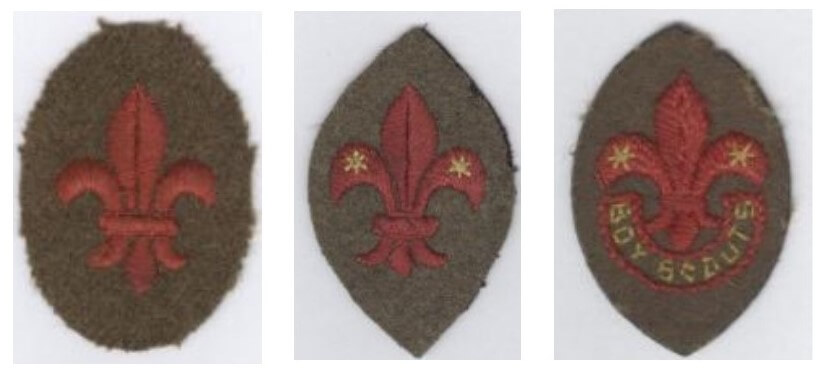
The symbol kept evolving, with subtle changes to the shape. In 1927, the words Boy Scouts were added.
The story evolves
After the creation of the Wolf Cubs section, which formally launched in 1916, Baden-Powell also said the two stars could also represent the gleaming eyes of a wolf cub. This relates to the two stars that Cubs worked for during their programme and were worn on the Cub cap.
Wolf cubs are born blind, so correspondingly new Cubs wouldn’t have the stars on their cap. However, by the time a Cub was ready to go to Scouts his eyes would be fully and he’d have two stars showing his development. This element of the Cub programme was replaced in 1967.
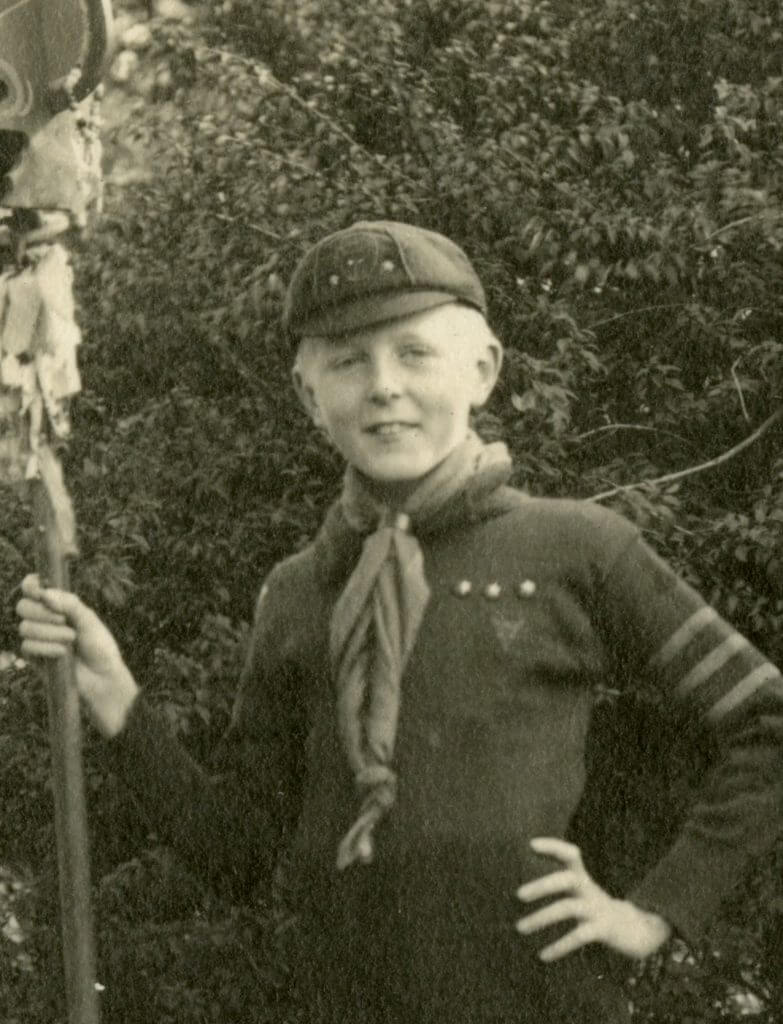
As Scouts spread around the world, countries created their own versions of the Scout symbol. They sometimes added to the design to make it unique to their country.
In 1972, the World Membership Badge was introduced for all national Scout organisations that were part of the World Organisation of the Scout Movement (WOSM).
In the UK, the World Membership Badge presented to new members when they join Scouting.
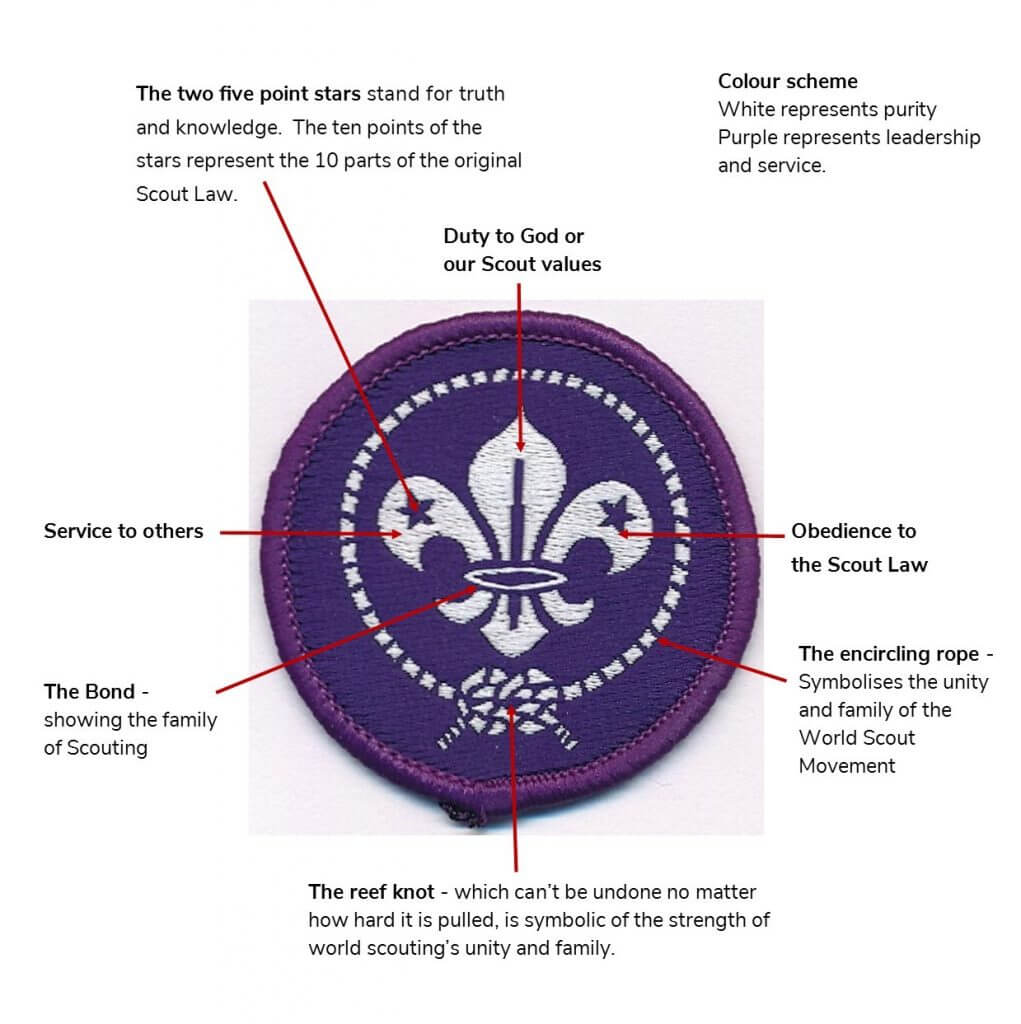
A new look for the digital age
In May 2018, following wide consultation, a new Scout brand and visual identity was introduced for UK Scouts. This included a new, simplified fleur-de-lis. It was designed to be more visible when used at a smaller size, such as when seen on phones and other devices. It was an evolution of the classic fleur-de-lis for the digital age.

Adopted by Groups, Districts, Counties Nations across the UK, the new fleur-de-lis looks and feels contemporary, while retaining our iconic heritage. It also has echoes of Baden-Powell’s very first drawing.
While this new fleur-de-lis is seen on signs, books, clothing, social media and websites, UK Scouts continue to wear the World Membership Badge on their uniforms.